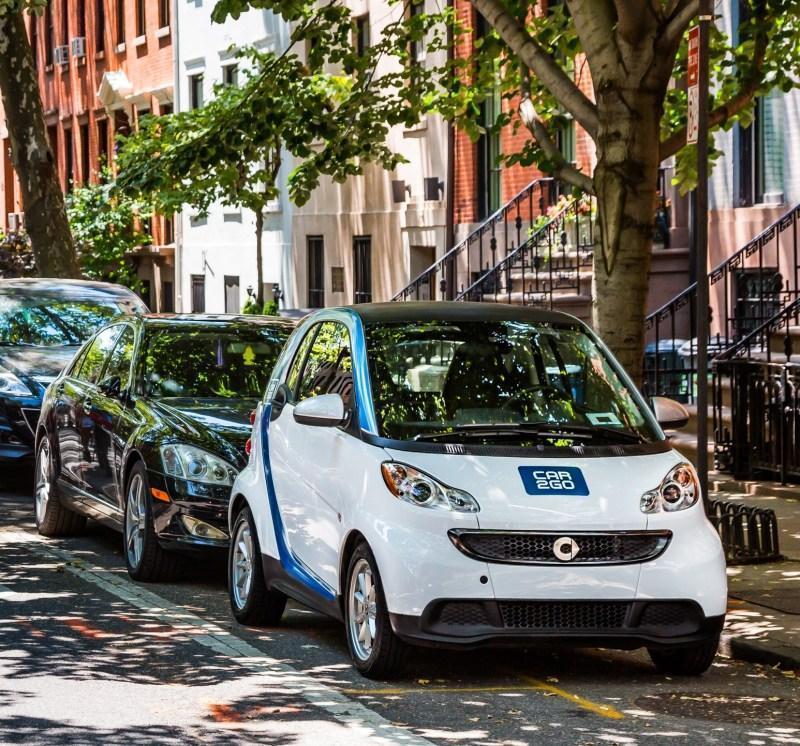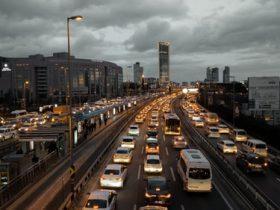By David Meyer
Is New York City’s car-share pilot working?
In one short — and very premature — word: yes.
The city has been setting aside on-street parking for car-share companies since June in hopes of reducing private car ownership — and a final report isn’t due until September. But we’re impatient, so we called Susan Shaheen, a researcher at UC Berkeley’s Transportation Sustainability Research Center, who has been hired by DOT to ask NYC car-share users how the program has changed their travel behavior.
What are the potential positives of car-sharing?
When I first was exposed to the concept of auto-sharing, what appealed to me was that it had the ability to shift people away from the fixed costs of car-use into a variable model. You only use car-share when you need to. One of the findings from Europe, after it became more popularized there in the late 1980s, was that auto ownership declined with car-share use.
What I’m starting to see from the earlier New York survey work in April is some of those same trends, particularly the round-trip model.
The next question is: if people did or did not give up their own cars, how did car-share influence their use of other modes? How does the use of other modes in the ecosystem change as a result of car-sharing? The causal link component is something we put a lot of attention on because we want to understand — did car-share cause less car ownership. We want to work with participants to understand if the introduction of car-share in their lives changed their behavior.
We’re trying to help New York City unravel how their car share is impacting human behavior.
Who uses car-share?
Of the round-trip car-sharing members we surveyed in April 2018, most joined for additional mobility because they did not own/lease a personal vehicle.Members tend to be male and Caucasian, although membership does include people who identify as Asian, Black/African, and Hispanic/Latino. Women make up less than half of the membership population, which is not unusual in car-sharing more generally.
One thing we’ve found in our two decades of research is that there’s no one response to an innovation. What we see in our surveys is a whole range of response. In some cases, you’ll see that some people now have access to a car, and what is happening is they’re traveling more by car.
How does joining car-share tend to impact user travel behavior?
Members tend to use car-sharing for recreational trips within and outside the five boroughs. This is consistent with prior car-sharing research in the U.S. Members also tend to use car-sharing vehicles to go to/from the grocery store and move bulky items. This is consistent with prior car-sharing research in the U.S.

If round-trip car-sharing was unavailable, slightly more people would have taken [Uber/Lyft] than rail, more would have rented a car from a traditional car rental company, and some would not have taken the trip.
About half of people who gave up one personal vehicle did so due to the car-sharing service. Many New Yorkers surveyed did not have a car to get rid of in the year before they became car-sharing members.
Does that mean that car-share will cause more New Yorkers to drive?
My colleague Robert Cervero has studied this in San Francisco. Initially, a lot of people who were attracted to car-share were non-car owners. Then, over time, they found more people who owned cars joined the system. Eventually, there was a net decline in vehicle miles traveled. What we’ve seen in a lot of the research we’ve done in shared mobility.
In New York City, we’re seeing a combination of people who have cars and people who don’t. It’s not one way or the other.
Along with that question, an important question needs to be asked: Were you thinking of buying a car anyway? We don’t just like if you sell a car, but did car-share cause you to suppress buying a car? You can’t just say, “OK, this person didn’t own a car so they’re driving all over the place.”
As somebody who’s studied this phenomenon for 25 years, I can tell you that the fixed costs of auto ownership cause people to use their cars more often. The marginal cost of each trip is small. Once people invest in the car, they’re invested in that form of mobility in an almost exclusive fashion.
What are some challenges cities face when introducing car-share?
Per this New York Times article, there can be dissent from citizens, if they perceive that parking spots that they are used to having for their personal vehicles are repurposed for car-sharing. In New York City, there is already competition for parking spaces. It’s also challenging to expand car-sharing to low-income and minority groups. In this project, we will compare car-sharing member demographics to neighborhood demographics to investigate whether a wider population is using car-sharing in New York City.



















